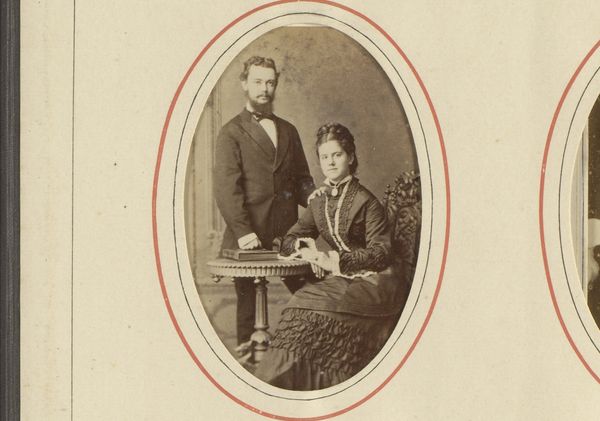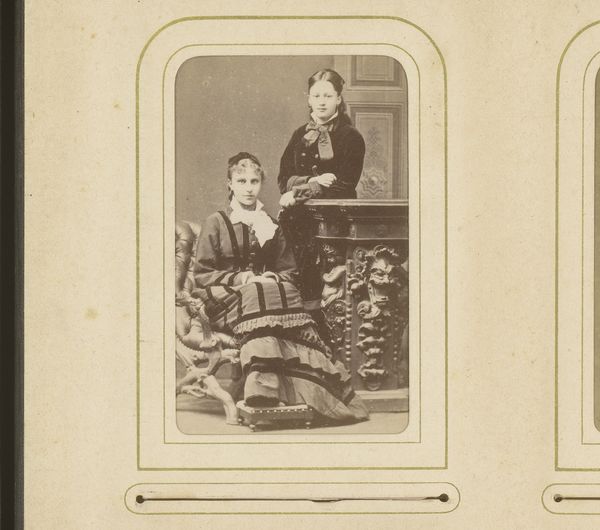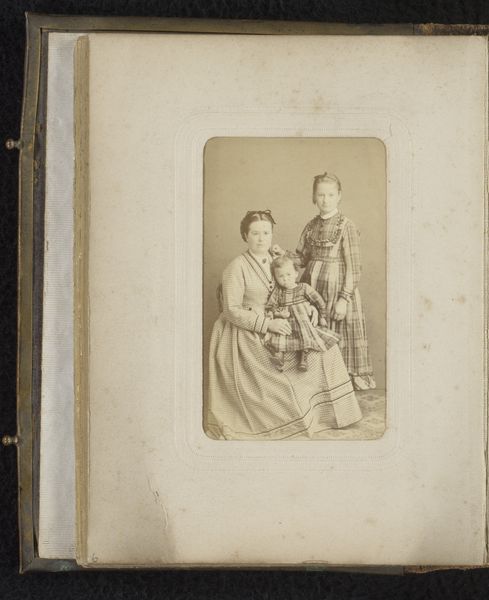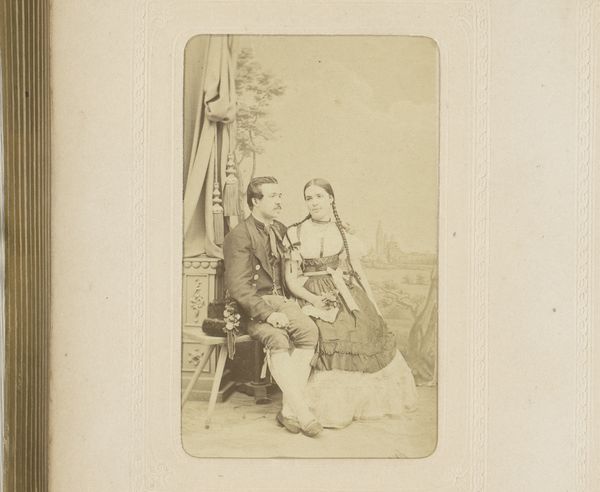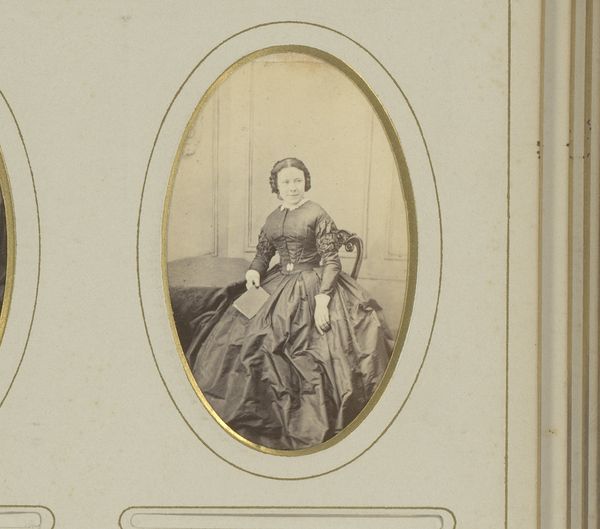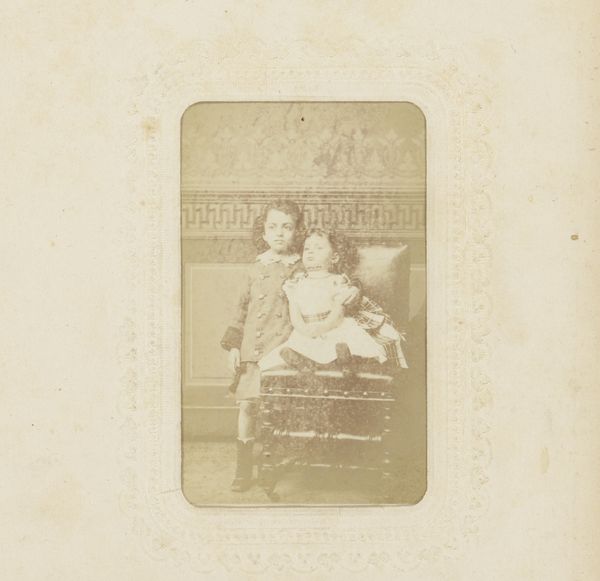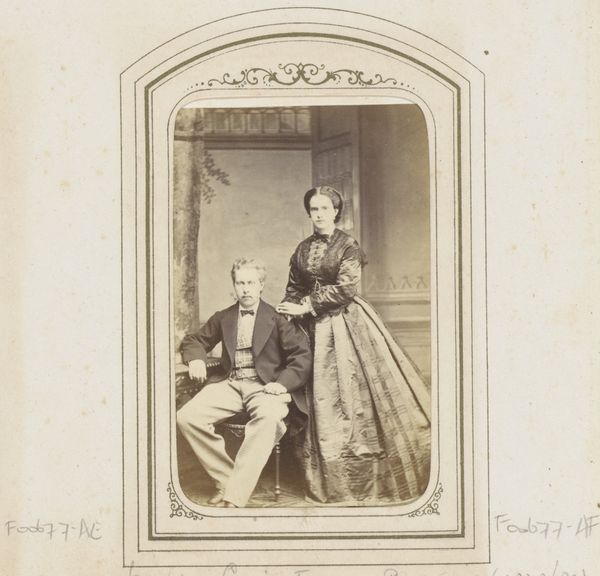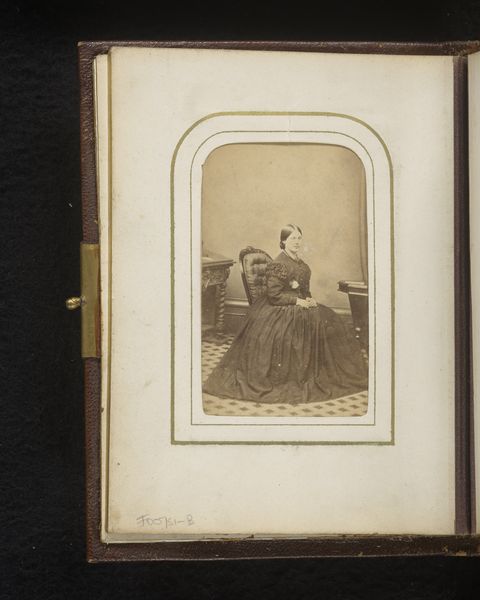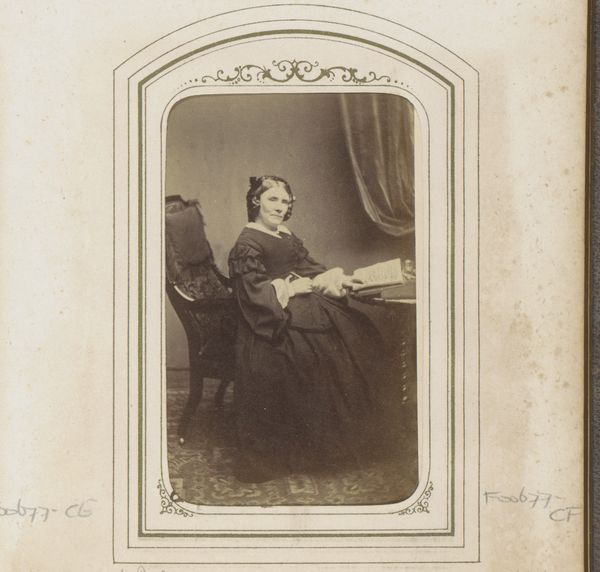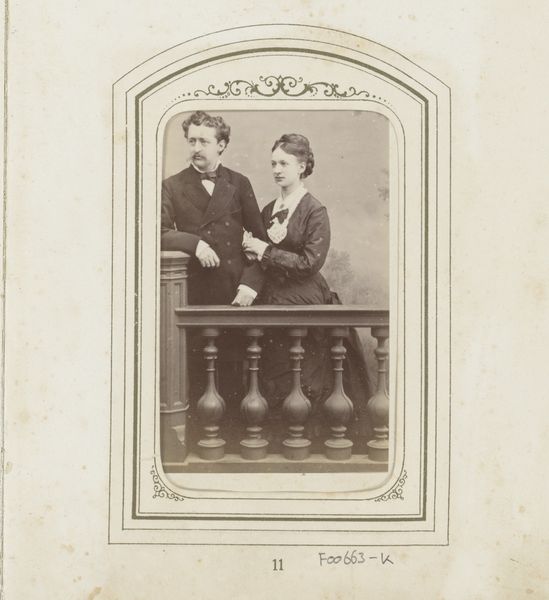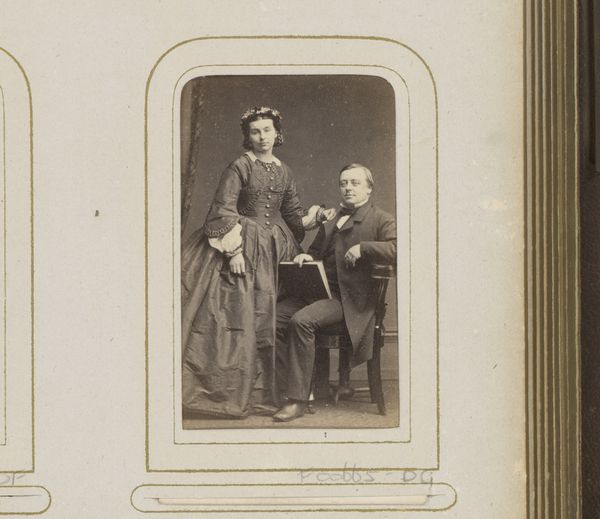
photography
#
portrait
#
photography
#
genre-painting
#
realism
Dimensions: height 85 mm, width 53 mm
Copyright: Rijks Museum: Open Domain
Curator: This is "Portret van twee vrouwen," a photograph taken by Hendrik Anthonie Karel Ringler, dating from approximately 1872 to 1879. Editor: It's striking, this image. There's a solemnity about it, a weightiness emphasized by the subdued tones. It feels very much of its time. Curator: Absolutely. Ringler was working within a specific historical context, where photography was becoming more accessible, but portraiture still carried a certain formality. You see that reflected in the careful staging and the sitters' postures. The elaborate framing also draws our attention. Editor: The very act of commissioning and then crafting this sort of image signifies so much about status, class, and the material conditions of life then. You can see it even in the very precise arrangement of clothing, table, and prop—that little book—and each becomes a potent indicator of value, even aspiration. Curator: Consider the material process too. Each button, each pleat on the dresses tells a story of manufacture and labour. Realism, it should be added, also dominated art then. Note too the framing and how Ringler might have constructed the image versus accepted any spontaneous capture of a chance moment in time. Editor: And photography at that time was so freighted with the weight of representation. These images were seen, at least initially, as direct copies of reality. The choice to portray themselves with such seriousness probably reflects that belief in photography's unique ability to convey truth, or at least a certain self-image for public consumption. Curator: It is a fascinating question, that truth, especially given that posing and arrangement. Was it simply reproducing an image or constructing a social ideal? Who paid for it and for what reason? The fact they selected this photo must be included. Editor: Indeed. And the circulation of this type of portrait—where did it end up? Whose hands passed it around? Was this shared widely, shown only among family, kept secret for particular purposes, and then lost only to surface again centuries later? A real slice of preserved cultural identity! Curator: Exactly. Seeing it like this, its value moves beyond aesthetic appeal. Editor: Yes, understanding its making unlocks its historical narrative.
Comments
No comments
Be the first to comment and join the conversation on the ultimate creative platform.

